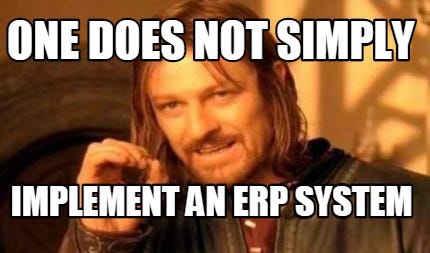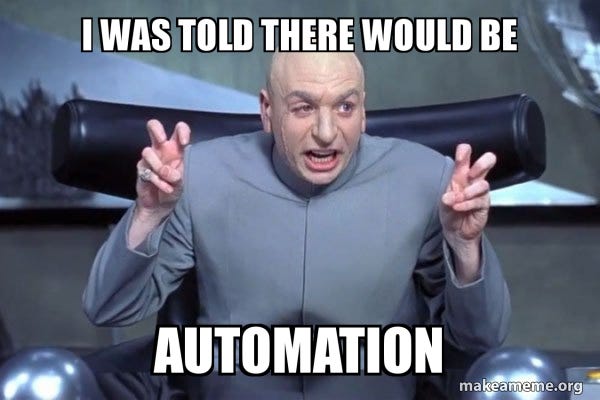It's Not the System, It's Your Process
A Finance Transformation Reality Check
A few years ago, as a senior analyst drowning in spreadsheets and burning the midnight oil, I was promised salvation by my leadership team: a new planning system that would revolutionize our financial forecasting. The vendor demonstrations were flawless. The consultants were top-tier. The references were stellar.
And then it failed spectacularly.
Fast forward a few years. I'm now the Director of Transformation sitting in a finance leadership team meeting, advocating for the exact same software. The room erupts in knowing chuckles and eye-rolls. "We've been down this road before," they say. "It didn't work then, why would it work now?"
Here's the Plot Twist
The software wasn't the problem. In fact, our competitors were using it successfully. The same system that had "failed" us was transforming other organizations. The difference? They hadn't made our critical mistake: attempting to automate broken processes.
The harsh truth is that your system doesn't matter - your process does.
The Real Problem
When organizations struggle with their financial processes, they often blame their tools:
"Our ERP system is outdated."
"Excel can't handle our complex needs."
"We need better automation."
Here's the reality: QuickBooks alone can power a successful business. I've seen startups thrive on it, and I've even seen Fortune 500s consolidate results from subsidiaries using QuickBooks as their subledger. The issue isn't that your tools are inadequate - it's that your processes are fundamentally broken.
The Month-End Close Example
Want to know why your month-end close takes weeks? It's not because your journal entry system is broken. It's because your vendor rebate process requires four different people to touch the data, starting with someone manually copy-pasting rows into a CSV file. No amount of sophisticated software can fix that fundamental inefficiency.
The AI Automation Trap
Today, everyone's rushing to implement AI and automation solutions, imagining a world where robots will magically make their existing processes more efficient. This thinking is flawed for two crucial reasons:
AI is smart enough to recognize that your current process sucks. If you asked it to design a process from scratch, it would look nothing like what you're doing today.
Automation amplifies everything - including mistakes. If you automate a broken process, you're just creating errors faster and more consistently.
The Path Forward
Instead of searching for the perfect software solution, start with these steps:
Map your processes at the atomic level. Understand every input, transformation, and output.
Trace your inputs upstream. Where do they come from? How could they be cleaner?
Follow your outputs downstream. Who uses them? What are their actual needs?
Start small. Perfect one process at a time.
Once you've cleaned up your processes, then - and only then - should you consider more sophisticated tools to scale them.
A Better Approach
You're better off starting small and growing your circle of impact than trying to boil the ocean with an enterprise-wide transformation.
For example, instead of implementing a comprehensive planning solution, start by perfecting your sales forecast for your most critical business unit in Excel. Today's Excel would be unrecognizable to my former self as an entry-level analyst ten years ago. You can now handle predictive analytics, reporting automation, and business intelligence dashboards in Excel—all in a fraction of the time it used to take.
Once your sales forecast is working smoothly, add a direct cost model. Then a margin calculator. Before you know it, you'll have the building blocks of a sophisticated system—one that's based on proven processes rather than wishful thinking.
The Bottom Line
Stop looking for software salvation. Your existing tools - yes, even Excel - are probably sufficient to start improving today. The hard work isn't in implementing new systems; it's in the unglamorous task of fixing your broken processes.
Remember: The best system in the world can't fix a broken process, but a solid process can succeed even with basic tools.



